Borders and Resistance
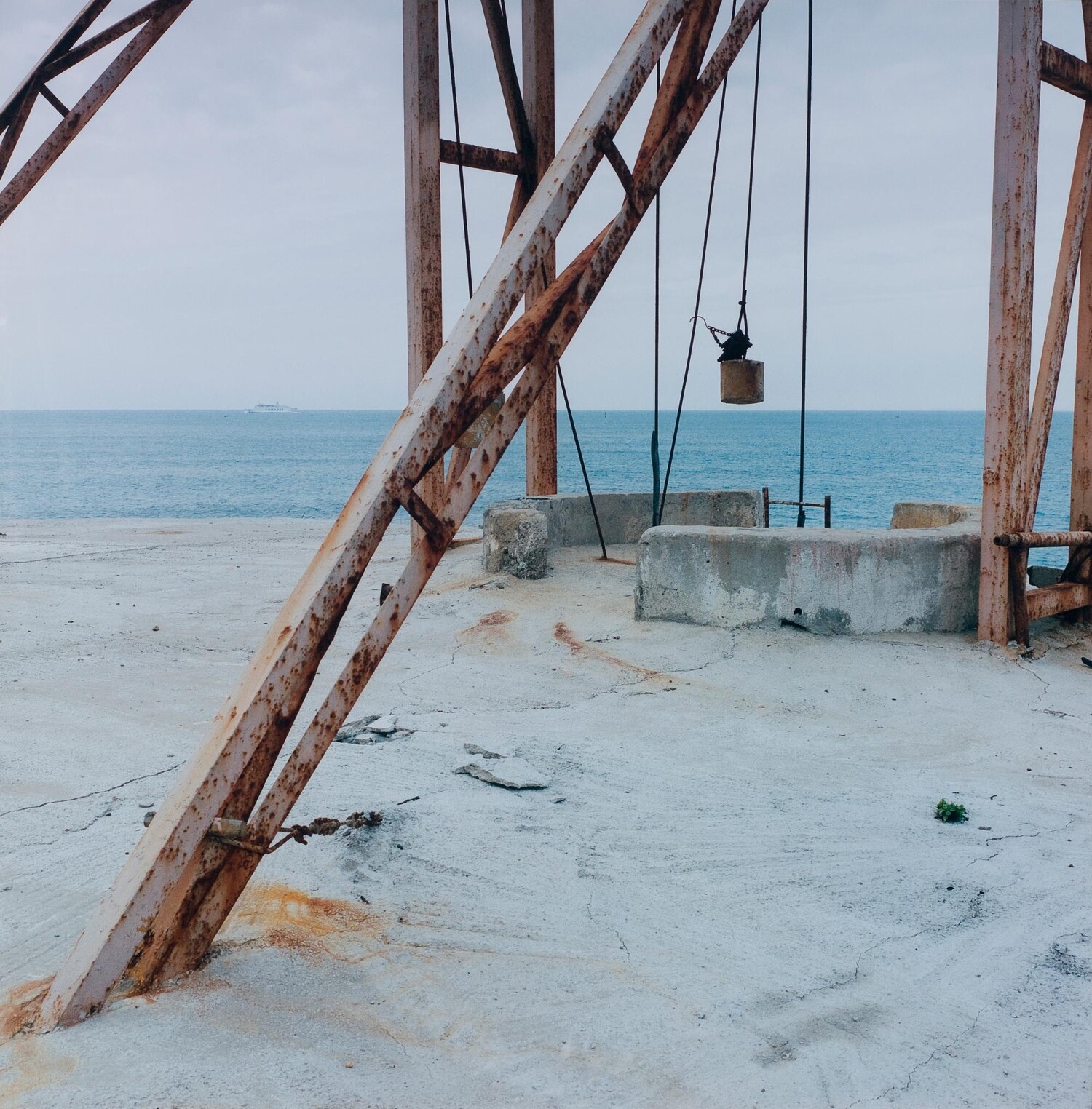
A close look at the photography of Franco-Moroccan artist Yto Barrada in the collection of the Mildred Lane Kemper Art Museum
"All my work explores strategies of survival, of resistance, in conditions of constraint." — Yto Barrada

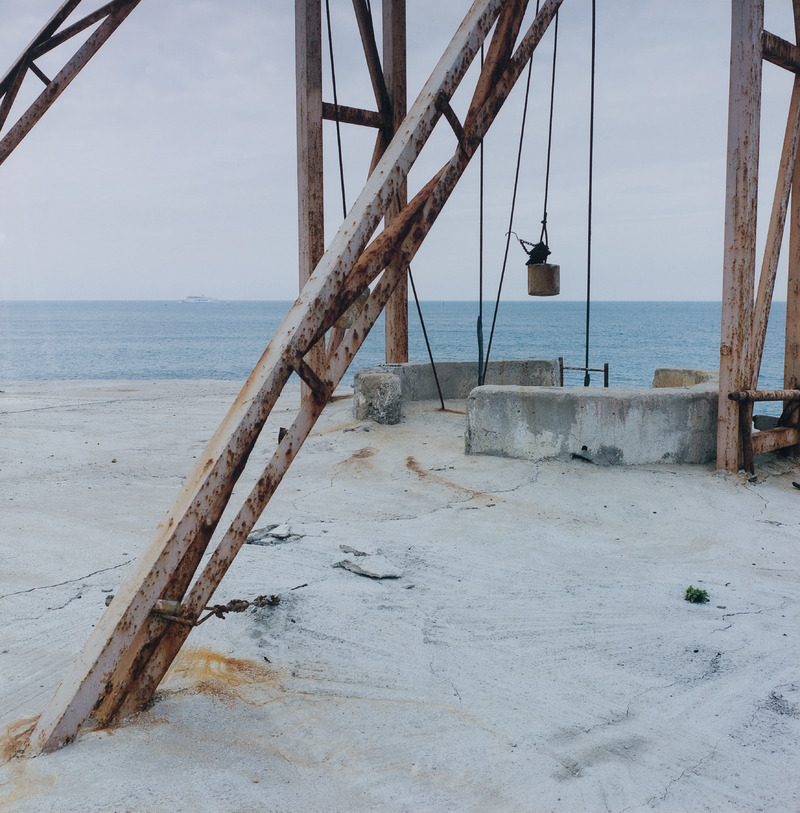
A Close Look
In Tunnel—Disused Survey Site for a Morocco-Spain Connection and Landslip, Cromlech de Mzora, Yto Barrada offers a photographic meditation on migration through scenes of Tangier, Morocco—the artist’s hometown and a historically contested territory under European colonial occupation until Morocco’s independence in 1956. The photographs are part of the series The Strait Project: A Life Full of Holes (1998–2004) comprised of photographs, videos, and installations related to the Strait of Gibraltar, the channel that separates and connects Morocco and Spain. Barrada’s multidisciplinary series explores the cultural, geopolitical, and natural boundaries between North Africa and Southern Europe.
Let’s start by examining both Tunnel and Landslip, two landscape photographs that present different views of and from Tangier. As you look at the images, consider the meanings of “strait.”
strait (noun)
1) a comparatively narrow passageway connecting two large bodies of water—often used in plural but singular in construction
- isthmus
- archaic: a narrow space or passage
2) a situation of perplexity or distress—often used in plural
“The fact that the border is closed creates this situation of longing, desire to cross, and the violence of that desire is that it's confronted [by] a wall. What I try to describe in my images is that state, that situation.” — Yto Barrada

As Barrada has noted, the words for strait in both Arabic (مَضيق) and French (détroit) imply narrowness and distress, recalling the qualities of a natural barrier. The word also captures the psychic and physical boundaries impacting residents of Tangier.
In Tunnel rusted steel beams and cables cut across an otherwise sparse landscape. The vertical and diagonal lines frame a barely visible cruise ship at sea in the distance and a weighted cable suspended above a concrete structure. The composition conveys a sense of spatial division with the steel beams appearing more like barriers. As viewers, we look across the Strait that stretches before us and from which, on a clear day, one can see the coast of Spain.
The photograph documents the traces of an unfinished project between the governments of Morocco and Spain to construct a tunnel intended to facilitate movement between the two coasts for more than nine million people each year. Before 1991 the Strait had served as passage between Morocco and Spain, but this changed with the European Union’s Schengen Agreement that restricted movement to one way, effectively closing European borders to Moroccan citizens.
The disused passageway and the structure’s repetition of empty frames recall a passage from the 1964 autobiography of Moroccan storyteller Driss Ben Hamed Charhadi’s A Life Full of Holes, from which the artist titles her series and quotes: “People say, ‘It’s better to have no life at all than a life full of holes.’ But then they say: ‘Better an empty sack than no sack.’ I don’t know.” The remnants of the abandoned engineering site at the edge of the sea serve as a reminder of the failed project and the global sociopolitical forces that limit human mobility.
"I try to expose the metonymic character of the Strait through a series of images that reveal the tension that restlessly animates the streets of my hometown between its allegorical nature and immediate, harsh reality. My work attempts, in part, to exorcise the unspoken violence of other people’s departures. I, too, left Tangier for more than ten years; by moving back I have placed myself amidst the violence of homecoming. There are no flaneurs here, and no innocent bystanders." — Yto Barrada
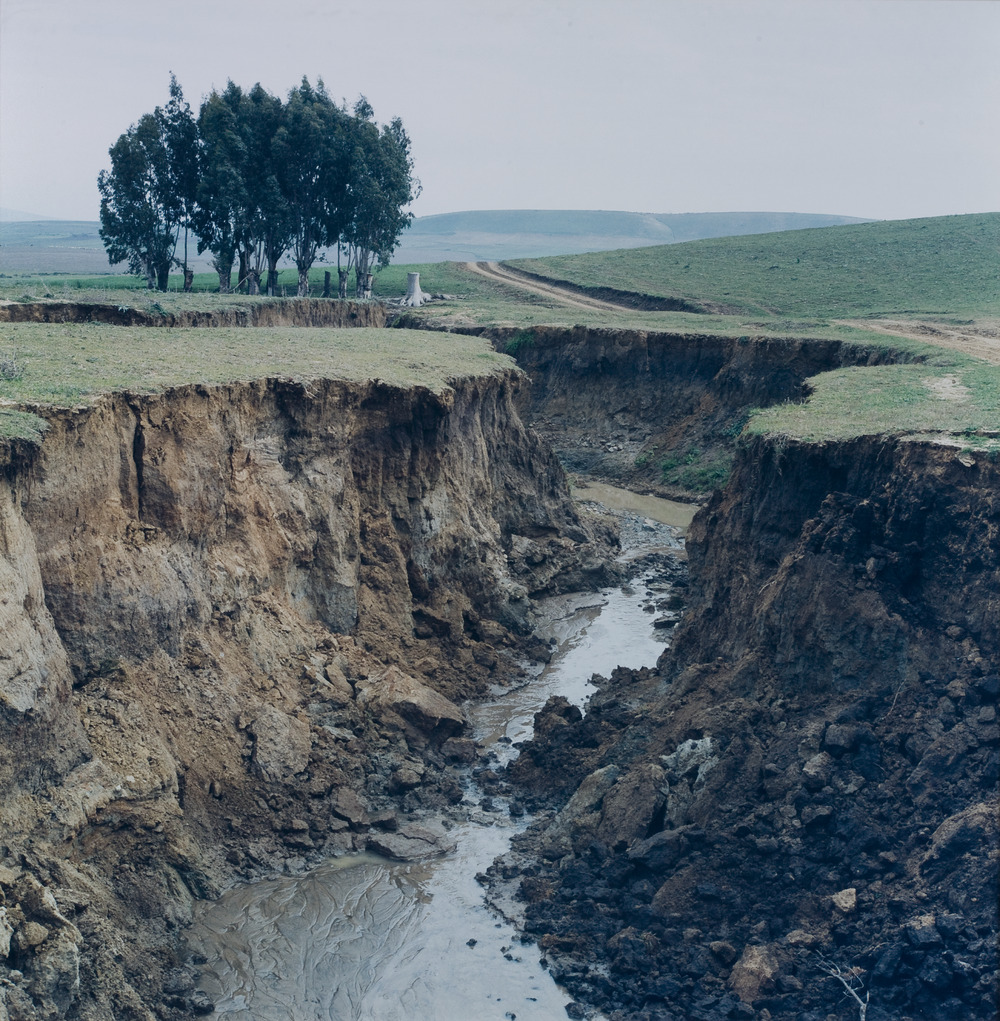
In Landslip, Barrada takes us thirty miles outside of Tangier to a site of erosion. The photograph depicts a pastoral landscape divided in the foreground by a deep geological rupture that has split the land in two. At the bottom of the rift a stagnant and rocky, mud-filled stream disappears in the curves of the fault line’s steep sides. In the background a single row of trees, some chopped, stand next to an empty dirt road that cuts through green hills. As in Tunnel, the photograph signals human presence through absence.
Located near the Cromlech of Mzora, a megalith dated from c. 400–200 BCE and cited in ancient Greek mythology as the probable tomb of the Libyan giant and king Antaeus, son of Gaia and Poseidon, the photograph captures the destabilizing effects of geologic change on the landscape. While the historic site referenced in the title is not visible in the photograph, Barrada invites us to consider the relationship between the monument and the landslip and, in doing so, the relationship between historical and natural cycles of change.
Landslip captures a sense of movement signaled by the landscape in the process of transformation. The land’s association with ancient civilization, here absent, also suggests the rise and fall of empires and the impermanence of socially constructed divisions around nationhood. Yet the landscape also evokes stasis and the very impossibility of mobility through the large, insurmountable gap that visualizes separation.
Tunnel and Landslip reflect on the perilous realities of migration, displacement, and border crossing that have made the Strait a symbol of what the artist calls “a thousand hopes” and likewise a “vast Moroccan cemetery.” Rather than offer a straightforward documentary account of the social and political realities of North Africa, Barrada approaches the politics of borders through empty spaces on the margins, places in which identities are shaped and lived. Her photographs of Tangier, distinct from the exoticized depictions of the city in tourist brochures, engage with the legacies of colonialism and invite us to consider the conditions of refugees in our contemporary world.
Response Wall
We invite you to share your response to the artwork and the issues it addresses, and to read others’ responses as well.
Keep Exploring
Listen to Yto Barrada discuss her series A Life of Holes: The Strait Project and the many meanings of the Strait of Gibraltar.
About the Artist
Multidisciplinary artist Yto Barrada was born in Paris in 1971 and grew up in Tangier. She later studied history and political science at the Sorbonne, Paris, and photography at the International Center of Photography, New York. Her practice spans photography, film, sculpture, prints, and installations. She is the artistic director and cofounder of the nonprofit Cinémathèque de Tanger, an art house cinema and film archive in Tangier.
Notes
Belon, Olivier. "Portrait. Yto Barrada." Critique d'art 42 (2014): 1–3. https://journals.openedition.org/critiquedart/13560
Charhadi, Driss Ben Hamed. A Life Full of Holes. Recorded and translated by Paul Bowles. New York: Harper Collins, 1964.
Collins, Charlotte. “Morocco unbound: an interview with Yto Barrada.” openDemocracy, May 16, 2006. https://www.opendemocracy.net/en/barrada_3551jsp/
Erwann, Andre. “Cromlech M’zora.” Wikimedia Commons, December 11, 2016. https://commons.wikimedia.org/wiki/File:Cromlech_de_M%27zora.jpg
Jones, Kristin M. “Yto Barrada.” Frieze (September 2, 2006). https://www.frieze.com/article/yto-barrada
Sheren, Ila. “Spotlight Essay: Yto Barrada.” In Spotlights: Collected by the Mildred Lane Kemper Art Museum, edited by Sabine Eckmann, 236–41. St. Louis: Mildred Lane Kemper Art Museum, 2016. https://www.kemperartmuseum.wustl.edu/learn/learning-resources/barrada-yto-tunneldisused-survey-site-for-a-moroccospain-connection-and-landslip-cromlech-de-mzora-20012002/type/essays
“strait.” Merriam-Webster. 2021. https://www.merriam-webster.com/dictionary/strait
Toussain, Évelyne. "Yto Barrada: figures de résistance à la domestication de l’espace." Itinéraires 2012–2013 (July 1, 2013): 57–67. http://journals.openedition.org/itineraires/949
“Yto Barrada.” http://www.ytobarrada.com
“Yto Barrada.” Sfeir-Semler Gallery. https://www.sfeir-semler.com/galleryartists/yto-barrada/biography
“Yto Barrada on how the Strait of Gibraltar shapes life in Tangier.” YouTube, uploaded by San Francisco Museum of Modern Art, July 9, 2018. https://www.youtube.com/watch?v=0iPDJ2loddQ
Yto Barrada, Tunnel—Disused Survey Site for a Morocco-Spain Connection, 2002. C-print mounted on aluminum, 39 3/8 x 39 3/8". University purchase with funds from Helen Kornblum, 2013.
Yto Barrada, Landslip, Cromlech de Mzora, 2001. C-print mounted on aluminum, 23 5/8 x 23 5/8". University purchase with funds from Helen Kornblum, 2013.
All artworks are copyright the artist or the artist’s estate unless otherwise specified. Images on this tour are for educational purposes only and are not licensed for commercial applications of any kind.
We are committed to encounters with art that inspire creative engagement, social and intellectual inquiry, and meaningful connections across disciplines, cultures, and histories. Do you have ideas or suggestions for other learning resources? Is there an artist or topic that you would like to learn more about? We would love to hear your feedback. Please direct comments or questions to Meredith Lehman, head of museum education, at lehman.meredith@wustl.edu.

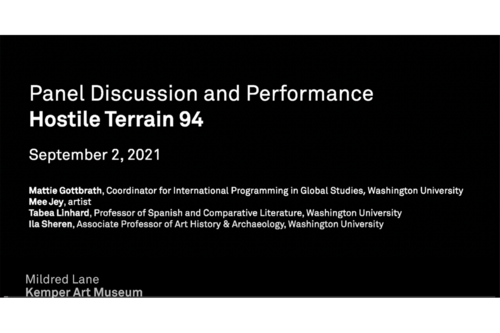
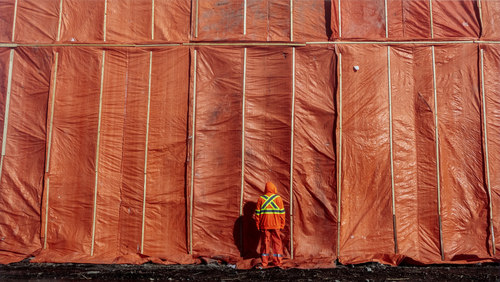
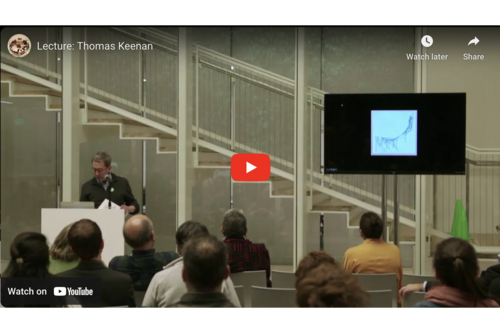
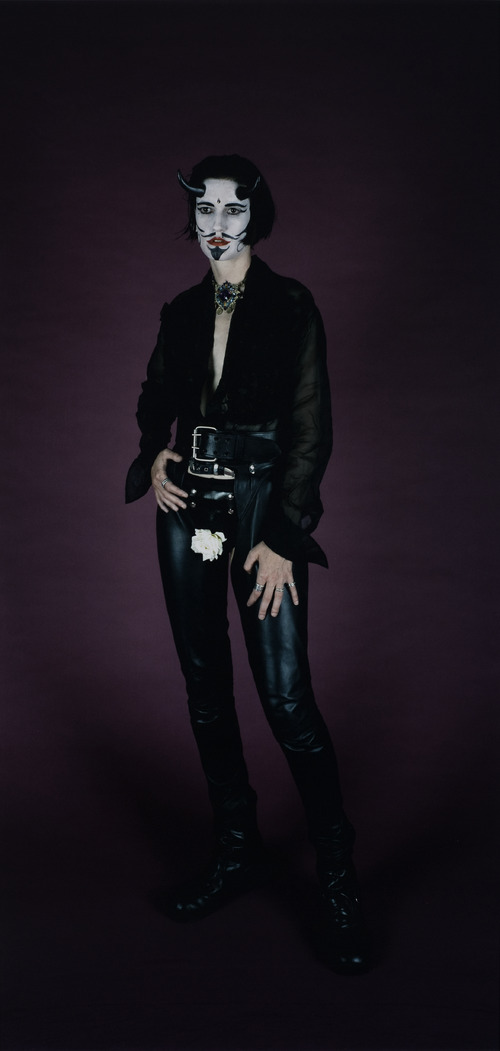
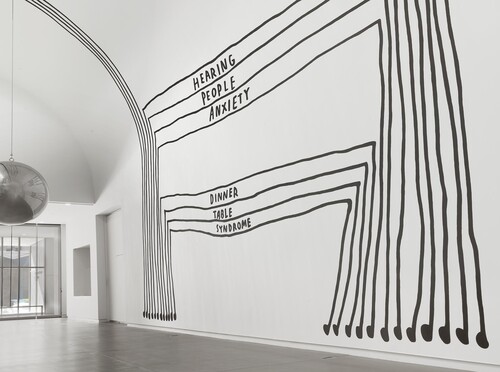

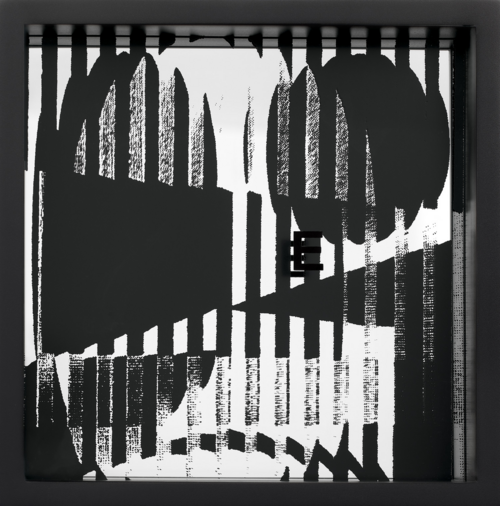
.png)